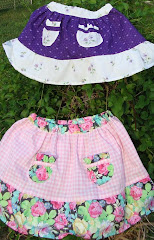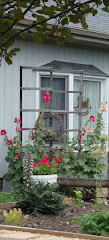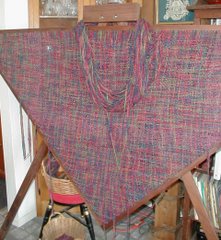 The days of the week blur together lately. I put up 19 quarts of green beans, 15 quarts of pickled beets, dried 8 pounds of beets, 16 pounds of various types of summer squash, 9 pounds of cucumbers and more this past week. I swear the corner of the kitchen in this photo is never empty. As soon as I take care of one dishpan of vegetables, another seems to magically fill and take its place.
The days of the week blur together lately. I put up 19 quarts of green beans, 15 quarts of pickled beets, dried 8 pounds of beets, 16 pounds of various types of summer squash, 9 pounds of cucumbers and more this past week. I swear the corner of the kitchen in this photo is never empty. As soon as I take care of one dishpan of vegetables, another seems to magically fill and take its place.To get us through busy weeks like this, I rely on make-ahead dishes and "twice is nice" menus. The latest addition to my cookery repertoire is a marinated salad that can be made in advance, uses up lots of garden produce and makes a great side dish or topping for use with a tortilla roll-up and which, with the addition of chopped cooked chicken, sliced hard-boiled eggs or a can of rinsed and drained beans, can serve as a main dish.
 For one of our completely local meals this week I included this salad, topped with hard-boiled eggs and accompanied by zucchini chips and a glass of mint tea. All but the tomatoes came from our homestead and those came from the local farmers' market. Next week when I make another bowl, I'll add a couple of our just-ready peppers, either bell or sweet banana.
For one of our completely local meals this week I included this salad, topped with hard-boiled eggs and accompanied by zucchini chips and a glass of mint tea. All but the tomatoes came from our homestead and those came from the local farmers' market. Next week when I make another bowl, I'll add a couple of our just-ready peppers, either bell or sweet banana. The dressing I use is a homemade Catalina. You could use a bottle from the store but I don't because the homemade is so easy to make and it has the spicy tang I can't find in a bottled version these days.
The recipe allows for a lot of variation. Just be sure to use fresh vegetables that won't go limp sitting in the dressing. For that reason, I prefer to use a meaty plum tomato and remove the seeds before chopping. Chop as much of each vegetable as you want to include. I don't measure but just use a bowl that will hold a little more than I want to make. That way I have room to toss the salad in the dressing without spilling it. When I have enough veg chopped, I pour on the dressing, toss to coat then cover and refrigerate till serving time. It needs at least an hour or two to blend flavors before serving. Leftovers will keep 3 days or so in the fridge.
Catalina Dressing
2/3 cup mild-tasting vegetable oil
1/4 cup ketchup*
2 tablespoons honey (or 1/4 cup sugar)
1/4 cup white wine vinegar
1 tablespoon grated onion
1/2 teaspoon Worcestershire sauce
1/4 teaspoon salt
1/8 teaspoon hot pepper sauce
Combine all ingredients in a jar with tight-fitting lid. Shake to blend and then let sit for an hour or so before using. Shake thoroughly or use wire whip each time before serving.
Makes about 1-1/2 cups.
*I use Farm Journal's "Western Gourmet Ketchup" which I can every year using our garden tomatoes. (Recipe available here.) It has a sweet tangy flavor and works well in this recipe but probably any flavorful bottled ketchup would serve.



















